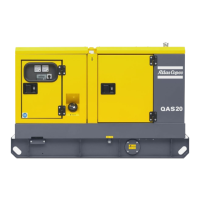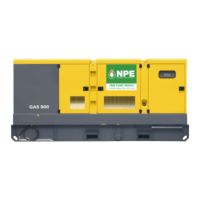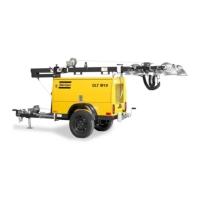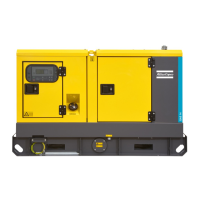- 26 -
4.2.2 Automatic operation
NOTE: If a digital input configured to 'panel lock' is
active, changing module modes will not be
possible. Viewing the instruments and event
logs is NOT affected by panel lock.
Activate Auto Mode by pressing the AUTO push
button.
The AUTO mode icon is displayed to indicate Auto
Mode operation, if no alarms are present.
Auto mode will allow the generator to operate fully
automatically, starting and stopping as required with
no user intervention.
4.2.2.1 Waiting in auto mode
If a starting request is made, the starting sequence will
begin.
Starting requests can be from the following sources:
– Activation of an auxiliary input that has been
configured to remote start
– Activation of the built-in exercise scheduler.
4.2.2.2 Starting sequence
1. To allow for 'false' start requests, the start delay
timer begins.
Should all start requests be removed during the
start delay timer, the unit will return to a stand-by
state.
2. If a start request is still present at the end of the
start delay timer, the fuel relay is energized and
the engine will be cranked.
NOTE: If the unit has been configured for CAN,
compatible ECUs will receive the start
command via CAN.
3. If the engine fails to fire during this cranking
attempt then the starter motor is disengaged for
the crank rest duration after which the next start
attempt is made.
Should this sequence continue beyond the set
number of attempts, the start sequence will be
terminated and the display shows the FAIL TO
START icon.
4. When the engine fires, the starter motor is
promptly disengaged. Speed detection is factory
configured to be derived from the main alternator
output frequency but can additionally be
measured from a magnetic pickup mounted on the
flywheel (selected by PC using the 3000 series
configuration software).
5. Additionally, rising oil pressure can be used to
disconnect the starter motor (but cannot detect
underspeed or overspeed).
NOTE: If the unit has been configured for CAN,
speed sensing is via CAN.
6. After the starter motor has disengaged, the ‘Safety
On’ timer activates, allowing Oil Pressure, High
Engine Temperature, Underspeed, Charge Fail
and any delayed Auxiliary fault inputs to stabilize
without triggering a fault.
4.2.2.3 Engine running
Once the engine is running and all starting timers
have expired, the animated ENGINE RUNNING icon
is displayed on the Qc1011™. The generator will be
placed on load if configured to do so.
NOTE: The load transfer signal remains inactive until
the Oil Pressure has risen. This prevents
excessive wear on the engine.
If all start requests are removed, the stopping
sequence will begin.
4.2.2.4 Stopping sequence
The return delay timer operates to ensure that the
starting request has been permanently removed and
isn't just a short-term removal. Should another start
request be made during the cooling down period, the
set will return on load.
If there are no starting requests at the end of the return
delay timer, the load is removed from the generator to
the mains supply and the cooling timer is initiated.
The cooling timer allows the set to run off load and
cool sufficiently before being stopped. This is
particularly important where turbochargers are fitted
to the engine.
After the cooling timer has expired, the set is stopped.
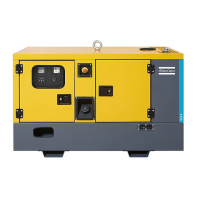
